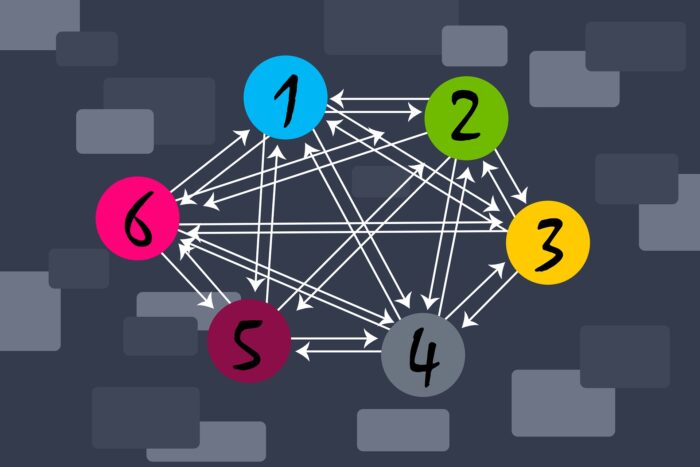Backlinks are a crucial part of any SEO strategy but they can be tricky to optimize. Getting linked from elsewhere helps your website perform better on search engines and gives it more authority. In practical terms, Google will treat your website as more rank-worthy if good websites are linking to you.
While achieving this can sound simple, it’s a source of frustration for many companies. Moreover, getting good websites to link to your content is one of the main issues many websites struggle with. This article will delve into some of the most popular strategies for backlink building.
Content-Based Strategies
While there are many ways to obtain backlinks, the first step is always to have something worth sharing. The quality of the content you’re providing will determine whether anyone will want to share it or not. Although this can sound vague and nebulous on its own, there are some guidelines for content quality.
Original data and research that isn’t available anywhere else can provide decent shareability. This has to be material that builds on a topic of interest and finds a new angle on it. Using data from existing sources can be great but it does not make your content more competitive.
Getting exclusive interviews and thought pieces from opinion leaders can be another helpful means of building a presence. Consider interviewing people in the industry or offering them a chance to write for you. You could also write guest posts on other websites and have them link to you.
Writing about niche topics can be a good way to make your data more shareable. Alternatively, you can try to write the most comprehensive article about a topic, as sometimes the algorithm favours longer articles. If these are deemed favourable, people will link back to them.
This type of strategy is all about offering people the information they can not obtain elsewhere.
Backlinks & Website Outreach Strategies

In terms of building backlinks vs internal links, Google gives far more weight to the former. Outside sources matter a lot and being linked continuously helps a website expand its web of connections. One of the ways to improve this factor is reaching out to other websites that are authorities on the article or post you made.
If you write an article about a topic of interest and find another website that might carry it, you can ask them to use your work as a reference. This is mutually beneficial, as they get to update their older information for fresher data and you get backlinks to your website. This helps improve your SEO and theirs, so don’t be afraid to reach out to other sites.
Tools for Backlinks
One easy way to find out who to reference is by using an SEO tool. SEMrush provides a list of websites you can obtain high-value backlinks. Ahrefs also has a backlink tool and the “best by links” section of the website can help identify high-authority websites you can target.
Both of these platforms also allow you to perform backlink audits, which can be useful for identifying broken links. If you find your website’s SEO changing arbitrarily, this can be a good place to check what went wrong. The website backlink analysis report will identify any chinks in your armour.
Now, you may already have the tools but don’t know where to look. If that happens to be the case, this next part is for you.
Backlink Audit Checklist
Firstly, there are a bunch of metrics you need to assess to judge the viability of a link.
- Quantity of backlinks, referring domains, and referring IPs: Good to compare your footprint with that of competitors.
- Authority scores: Helps determine how attractive your domain is for link-building prospects.
- Link attributes: Good for spotting gaps in your competitor’s profiles.
- Referring domains: Good for determining whether you should reach out to more domains than you currently do.
Secondly, there are some important metrics for evaluating the backlinks you have:
- Toxic score: Evaluate the toxicity of your site and that of each backlink.
- Number of analyzed backlinks
- Number of referring domains
If your toxic scores are high, you can use software like SEMrush and Ahrefs to disavow the link. You should also analyze whether there is volatility in the number of backlinks. Both sudden increases and decreases mean that you might have to investigate further.
You can also connect your link analysis tools to your Google analytics and search console. This will allow for more in-depth insights and better cataloguing of site info.
Backlinks for Affiliate Sites
In terms of affiliate marketing, link-building can be very important. Affiliate sites face some unique challenges, as they operate in a competitive environment. Additionally, many of the sites that will link expect to do it for payment. While paying for backlinks is a workable strategy, the ROI may not always be worth it.
In terms of content, the standard operating procedure for these sorts of sites is to post reviews and best-of lists. Frankly, this type of content is played out and it does not inspire shareability or backlinks. Google has started downgrading this type of content so it doesn’t show up as high.
Affiliate sites can benefit from finding relevant keywords in your niche rather than targeting the most popular keywords. Fill out a niche first and then you can expand.
Aside from this, get people to write guest posts as part of a co-branding exercise or do content collaborations. You can reach out to others via email or social media. Try to pitch them an idea for the collaboration or post. You can also hire influencers to boost your brand or blog. Find them on Instagram and get them to link back to you or be part of your content.
Black & Gray vs White Hat Link Building Strategies

This article is primarily discussing white hat methods for building links, but it is important to know about black hat and grey hat methods because you might need to counter them. This is especially useful if you want to learn how to protect your website from negative SEO.
White hat link building is the most preferable one. This includes practices like:
- Original, insightful content creation and curation
- Relationship-building techniques like the ones discussed earlier
- Helpful participation on industry blogs & forums
- Social media promotion
Black hat methods are frowned upon. These include:
- The use of private blogging networks to boost your own content
- High-volume, low-quality directory and social bookmarking submissions
- The use of shady links
- Spamming comments
- Copying and spinning articles or copyrighted material
- Cloaking i.e., using misleading headlines or descriptions to hide the nature of the actual content
- Keyword and keyphrase stuffing to game the algorithm
Grey hat methods reside somewhere in between. They are not inherently bad and can be neutral if you disclose the nature of the content and make no attempt to hide it. It’s worth noting that in the future of link building, these methods may be less favoured by the algorithm as Google dislikes some of them.
- Link purchases
- Native advertising and partnerships
- Paying for citations and listings
- Paid reviews
- Affiliate marketing


